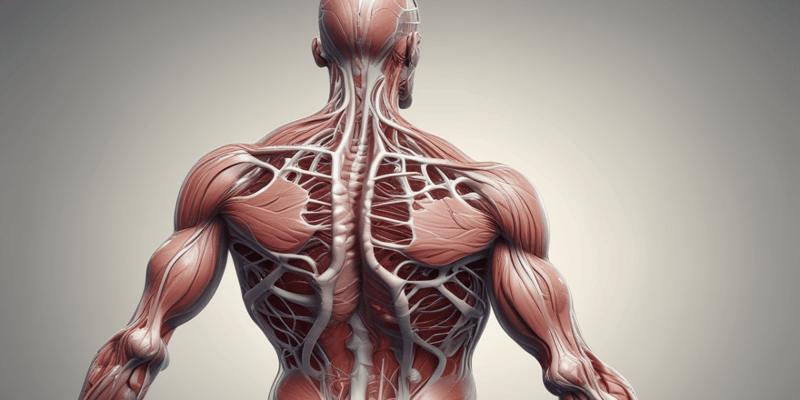Podcast
Questions and Answers
What is the key feature of the sliding-filament model that explains muscle contraction?
What is the key feature of the sliding-filament model that explains muscle contraction?
What is the function of the globular 'head' region of the myosin molecule?
What is the function of the globular 'head' region of the myosin molecule?
What is the result of the hydrolysis of bound ATP in the myosin molecule?
What is the result of the hydrolysis of bound ATP in the myosin molecule?
What is the function of the 'tail' region of the myosin molecule?
What is the function of the 'tail' region of the myosin molecule?
Signup and view all the answers
What is required for muscle contraction?
What is required for muscle contraction?
Signup and view all the answers
What happens to the myosin head when a new ATP molecule binds?
What happens to the myosin head when a new ATP molecule binds?
Signup and view all the answers




